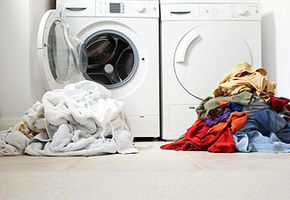Sustainability is a big buzzword these days, but what exactly does it mean? Sustainability means meeting your current needs without having a negative impact on the needs of future generations. It also requires you to make environmentally-conscious choices about the way you live. It's not really plausible for most of us to have a completely sustainable home -- one that uses only nature's infinite resources with no affect on the environment around us. But fortunately, there are some measures you can take to make your home more sustainable.
Advertisement
